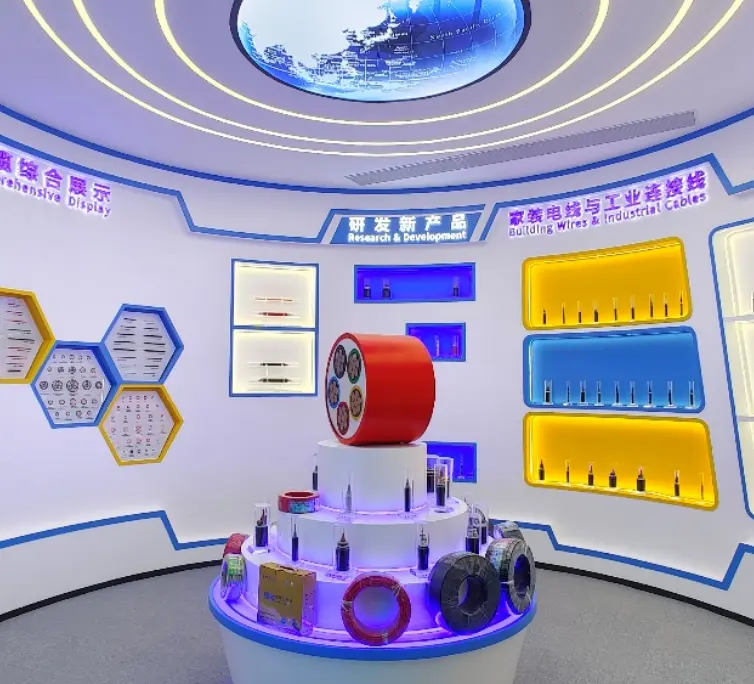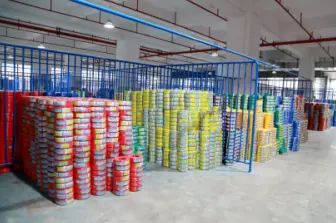Low Smoke Zero Halogen Cable: Guardian in the Fire
Difference between Low Smoke Zero Halogen Cable and Ordinary Wire
Materials
Low smoke zero halogen cables are made of compounds that do not contain halogens, lead, cadmium, chromium, mercury, and other substances harmful to the environment. When burned, they do not release toxic smoke and meet environmental protection requirements. Ordinary wires, on the other hand, typically use PVC materials containing halogens, which release large amounts of halogen acid gases and thick smoke when burned. These gases are highly corrosive and toxic, posing significant risks to both human health and the environment.
Combustion Characteristics
Ordinary wires release large amounts of thick smoke and halogen acid gases when burned, obstructing the visibility of firefighters during rescue operations, corroding surrounding equipment, and aggravating the spread of fire. Low smoke zero halogen cables produce only a small amount of white smoke when burned. The smoke density is low and does not release toxic gases, which is beneficial for evacuation and rescue during a fire.
Performance
Low smoke zero halogen cables have higher tensile strength than ordinary PVC wires, better weather resistance, and flexibility. Their volume resistivity and high-voltage resistance are also significantly superior to ordinary wires. Additionally, low smoke zero halogen cables use radiation cross-linking technology, giving them a lifespan of up to 70 years.
Applications
Low smoke zero halogen cables require a larger bending radius during installation to ensure electrical performance, making them suitable for subways, high-rise buildings, hospitals, and other densely populated areas. Ordinary wires, due to their halogen content and poorer flame retardancy, are mostly used in general home decor. According to the electrical design code for civil buildings, class one high-rise buildings must use low smoke halogen free cables.
Cost and Market Trend
The price of low smoke zero halogen cables is 10%-20% higher than that of ordinary wires due to the complexity of raw materials and production processes (such as radiation cross-linking treatment). However, as environmental protection requirements increase, public places are gradually adopting low smoke halogen free products to replace traditional PVC wires.
The Environmental Advantage of Low Smoke Zero Halogen Cables
The most notable feature of low smoke zero halogen cables is their environmental friendliness, as they do not contain halogens (such as chlorine, fluorine, bromine, etc.). Therefore, they do not release toxic halogen gases like hydrogen chloride and dioxins during a fire. Traditional cables release a large number of harmful substances when burned, causing serious harm to humans and the environment. In contrast, the combustion products of low smoke zero halogen cables are non-toxic and non-corrosive, reducing secondary pollution during a fire and meeting modern green building standards.
Low smoke zero halogen cables produce much less smoke compared to ordinary cables, with a light transmittance exceeding 60%, far superior to traditional PVC cables. Thick smoke during a fire is a major cause of suffocation and difficulty in evacuation. The low smoke characteristic ensures higher visibility in the fire scene, giving trapped individuals more time to escape and aiding firefighter rescue efforts. Additionally, they do not produce halogen-containing acidic gases when burned, and the smoke has very low heavy metal content, preventing poisoning and respiratory damage. This is especially suitable for hospitals, schools, and other crowded areas, ensuring that a fire would not worsen casualties due to toxic gases.
Low smoke zero halogen cables use special flame retardant materials that release crystallization water to absorb heat during combustion, inhibiting flame spread. Their flame retardant rating complies with the GB18380 standard, effectively slowing down fire spread and reducing fire damage. Experiments show that such cables can maintain circuit integrity for over 90 minutes at high temperatures of 750°C, ensuring emergency power supply in critical areas. The sheath materials of low smoke halogen free cables are high-temperature resistant and ultraviolet resistant, making them less likely to melt and ignite other objects during a fire. Their lifespan is more than 30% longer than ordinary cables, reducing fire risks caused by aging and offering significant long-term economic benefits.
In conclusion, in terms of safety, environmental protection, and performance, low smoke zero halogen cables are superior to ordinary wires. Although the initial cost is higher, their long-term safety, durability, and environmental value make them the preferred choice for modern buildings and public facilities. For safety, it is recommended to prioritize low smoke zero halogen cables in renovation or construction projects!
Latest News & Blog
 English
English  français
français  Deutsch
Deutsch  العربية
العربية  tiếng việt
tiếng việt  ไทย
ไทย  čeština
čeština  Indonesia
Indonesia  Eesti
Eesti  български
български  slovenčina
slovenčina 



